At Revive Surgical Institute, we offer advanced breast augmentation to help women achieve their desired breast volume and contour. Due to anatomical shape, pregnancy, or weight changes, many females desire fuller, more proportionate breasts to improve body proportions. Thanks to advances in cosmetic surgery, it is now possible to achieve natural-appearing, long-lasting results.
Our breast augmentation expert, board-certified plastic surgeon in Miami, Dr. Morad Askari, offers different types of breast augmentation by using breast implants: silicone and saline, and the patient’s own tissue. At Revive Surgical Institute, we use Sientra gummy bear breast implants, these are only available to board-certified plastic surgeons and are more cohesive, making them superior to others.

Breast augmentations in Miami are done to increase the size and form of the breast using an implant or the patient’s own tissue. This surgical procedure can be performed with breast implants or fat transfer to create fuller and more proportional breasts. Dr. Askari designs each breast augmentation to fit each patient’s desired volume, shape, and natural anatomy. This way, he ensures harmonious and natural outcomes.
Patients can opt for silicone or saline breast implants. Silicone implants have silicone gel within that offers a natural texture and feel, while saline implants have a sterile saltwater solution that is housed in a silicone covering. Breast implants are usually placed through very small incisions that usually occur under the breast crease or around the nipple-areola complex to minimize scarring. For a more natural look and feel, Dr. Askari suggests fat transfer augmentation. It uses fat taken from the patient’s body to subtly increase breast size.

At Revive Surgical Institute, we offer three different breast augmentation types, depending on the patient’s needs:
Silicone breast implants are the most popular types used during breast augmentation in Miami and the United States. The silicone breast implants are filled with silicone gel. Depending on what the patient wants to achieve and the shape of their breasts, Dr. Askari can decide which kind of silicone implant would be best for them. These implants offer the possibility to choose between different profiles (more or less wide) and sizes between 100cc and 800cc. We use Sientra silicone breast implants exclusive to board-certified plastic surgeons. They offer more cohesive breast implants, helping prevent silicone gel from leaking into the body in case of implant ruptures.
Saline breast implants are silicone shells filled with sterile salt water, aka saline solution. This type of implant offers different sizes and shapes. Patients who choose saline implants can increase their breast size by having the implants overfilled – although this does raise the risk of rupture. If such an implant ruptures, the sterile salty water it’s filled with will be harmlessly absorbed by the body. Even so, saline implants are more likely to rupture than those filled with silicone.
At times, it may be possible to use the patient’s own fat harvested through liposuction to augment the size of the breast. The fat transfer, called fat grafting, helps increase the size of the breast. But if patients are looking to change the shape of their breasts or gain more than one cup size, saline or silicone breast implants will be recommended.
We offer four main incision techniques that we choose according to patient anatomy, type of implant, and desired aesthetic result. The type of incision can have an effect on scarring, implant positioning, and final result:
The most common procedure, this incision is placed along the natural breast crease (inframammary fold). It offers accurate implant placement, accomodates larger silicone implants, and minimizes risks of implant displacement. The scar will be hidden under the breast and will become less noticeable with time.
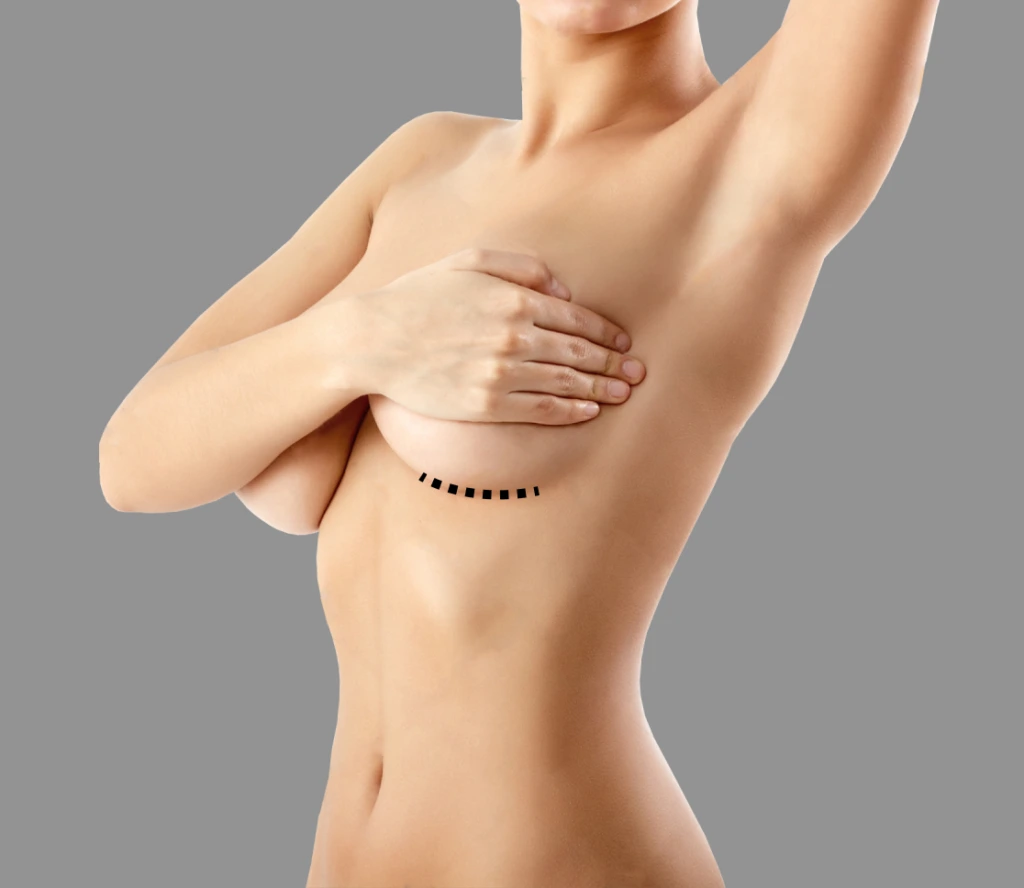
This technique involves a cut around the circumference of the areola so that subsequent scarring will be concealed by natural pigmentation. It provides good exposure to insert implants. But it can have increased risk of compromising nipple sensation or lactation.

Lorem Ipsum is simply dummy text of the printing and typesetting industry. Lorem Ipsum has been the industry’s standard dummy text ever since the 1500s, when an unknown printer took a galley of type and scrambled it to make a type specimen book. It has survived not only five centuries, but also the leap into electronic typesetting,

Lorem Ipsum is simply dummy text of the printing and typesetting industry. Lorem Ipsum has been the industry’s standard dummy text ever since the 1500s, when an unknown printer took a galley of type and scrambled it to make a type specimen book. It has survived not only five centuries, but also the leap into electronic typesetting,
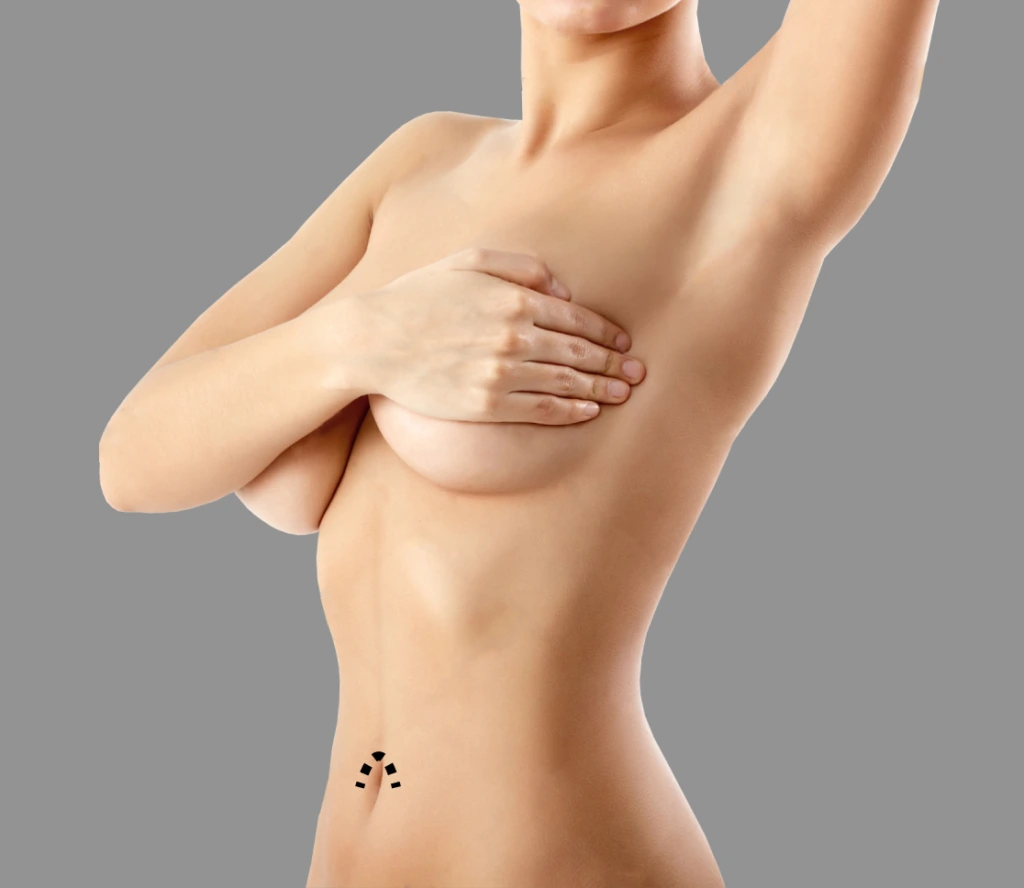

Breast implants can be positioned in different locations relative to the pectoralis muscle. The decision regarding placement will determine breast shape, mobility, and recovery time.
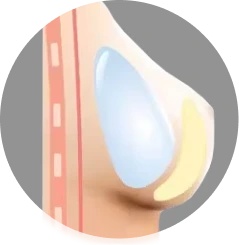
In this case, implants sit over the pectoralis muscle but beneath the breast tissue. This procedure has shorter recovery times and more defined cleavage. It is a good option to have if patients have thicker breast tissue. Subglandular placement can be more likely to have rippling with thinner breast tissue.
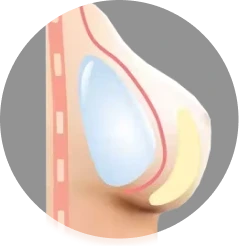
This is used more often than other placements with part of the implant being placed under the pectoralis muscle. It creates a more natural shape to the breast, reduces risk of rippling that is visible through the skin, and reduces risk of capsular contracture (hardening of the implant). It can take a little longer to heal but will provide a more natural and smoother breast appearance.

This hybrid procedure employs a dual-plane positioning. In fact, our surgeon positions the upper portion of the implant beneath the muscle but leaves the lower portion beneath breast tissue. This technique offers fullness to the upper pole with the maintenance of a natural slope. It is best utilized in mild sag cases or in breast lifts with implants.
At the initial consultation, Dr. Askari reviews the patient’s breast anatomy, desired look, and overall health to determine the best breast augmentation procedure. The patient can choose silicone or saline implants or fat transfer augmentation according to their desired look and body type. Then, Dr. Askari also takes pre-op photos to compare with post-op outcomes and provides a procedure cost estimate.
Before the procedure, patients undergo a complete medical evaluation, including blood tests, imaging studies (such as mammograms), and EKG, to establish that they are healthy enough to undergo surgery. Breast augmentation is not suitable for some medical conditions, including:
On the procedure day, Dr. Askari marks areas of the incision to preserve precision and symmetry. Then, our anesthesiologist administers general anesthesia to make the patient comfortable and pain-free during surgery.
For implants: Our surgeon makes small incisions (typically under the breast crease, around the nipple/areola, or in the underarm region) and creates a pocket to insert the silicone or saline implants. The implants are carefully positioned to provide volume and create a natural look.
For fat transfer breast augmentation: Dr. Askari takes out fat from areas like the abdomen, thighs, or flanks using liposuction. Then, he purifies it, and the purified fat is injected into the breasts strategically to create a fuller yet natural appearance without implants.
Once breast shape and desired proportions have been achieved, Dr. Askari closes the incisions with stitches and covers them with dressing or surgical tape to aid in healing. In some cases, drainage tubes may be placed to prevent fluid buildup. The procedure will take anywhere from 1.5 to 3 hours, based on the breast augmentation technique used.
We take care of patients after surgery in our cozy clinic to ensure their recovery from anesthesia is as comfortable as possible. The majority of our patients can be discharged home on the same day. Although some tenderness, swelling, and minor discomfort may be present in the early days. Dr. Askari can prescribe pain medication to manage discomfort and make recovery more comfortable. Patients should rest and avoid lifting or strenuous movements during this phase.
Patients should wear a compression bra for three to four weeks to help hold healing tissues in place and to prevent swelling. We recommend they avoid heavy lifting and exercise to prevent complications. Sutures typically dissolve on their own within six weeks. During this time, it is advisable to schedule follow-up appointments with Dr. Askari to monitor progress.
The majority of patients feel good a week after the surgery. However, it can take up to six weeks to recover completely, depending on implant size, type of incision made, and healing rate. The swelling will continue to dissipate over three to four months to reveal final breast augmentation results. Following a healthy lifestyle and aftercare instructions assures long-term beautiful results.
Breast augmentation is designed for those who want to enhance their breast volume, shape, and symmetry. The ideal candidate must be healthy and have realistic expectations of what breast implants can accomplish. The following are some of the key factors that make someone a good candidate for breast implants in Miami:
Women who do not like their breast volume or want to restore lost volume due to pregnancy, breastfeeding, or significant weight loss can benefit from breast implants.
The FDA requires that patients be at least 18 years of age to undergo saline breast implants and 22 years of age to undergo silicone implants. The regulations prevent inappropriate breast development prior to breast augmentation.
The candidate should be healthy, be a non-smoker, and be at a stable weight to ensure safe surgery and proper healing.
Patients have to wait until after they have finished nursing to have breast implants placed, as breast shape and surgical results can be affected by changes in hormones.
Having a clear understanding that breast implants will enhance but will not positively alter body proportions is essential to being satisfied with the result.
For surgery and recovery to go smoothly, it is essential to have a strong immune system as well as a healthy heart and lungs.
Having a lower BMI is ideal as it lowers the risk of complications and makes the procedure more effective.
First, depending on the age, patients will not have the option to get silicone gel implants for breast augmentation procedures as the FDA guidelines prevent placing silicone implants for patients under 22 years old unless it’s used for reconstructive purposes. Patients can choose between silicone or saline breast implants depending on what they are looking for. Silicone breast implants give a more natural feel, while saline breast implants are firmer. Following are some pros and cons of silicone and saline breast implants that can help patients reach a better decision:
Saline breast implants are firm and hard, while on the other hand, silicone breast implants are soft and squishier, thus giving a more natural feel.
Saline implants are usually very full and round. If a patient has thin skin, these implants can be more easily seen and can also cause rippling. They look less natural than silicone implants. Silicone gel implants look more natural and provide better size and shape than saline implants. This type of implant offers more possibilities to improve the shape of your breasts.
Breast implants do rupture in some breast augmentation patients, but the risk is very low. Generally, saline implants are more likely to rupture than silicone implants. The leaked sterile water is absorbed by a patient’s body, leaving behind the silicon shell for the breast augmentation surgeon to remove. The quality and brand of the implant play a major role in such incidents. In the newest implants, silicone is firmer and more glued together, which makes it more cohesive and less likely to leak.
Breast augmentation offers fullness and balance to breasts to make them more proportionate and well-balanced in their look. Whether it’s to enhance cup size or to correct asymmetry, this procedure offers a natural, aesthetically pleasing shape.
Breasts can become flattened and lose their firmness due to factors such as pregnancy, weight loss, or advancing age. This procedure rejuvenates plumpness and definition to make breasts look younger and more uplifted.
Many patients choose to have a breast lift with augmentation to enhance body proportions and create a more balanced look. A well-proportionate bustline can create better symmetry between the chest, waist, and hips.
Increased breast volume and shape can lead to improved body confidence that can make sexual relationships more comfortable and satisfying. Boosted attractiveness and self-confidence tend to lead to a more satisfying and enjoyable romantic life.
Breast enhancement surgery is extremely customizable, with options for silicone or saline implants in different sizes, shapes, and profiles. Patients can consult with Dr. Askari to select the ideal implant type that suits their desire and natural anatomy.
Breast implants are long-lasting and have long-term outcomes that typically last 10 to 20 years when properly cared for. While implants will eventually need future replacement, breast augmentation offers long-term improvements in volume and shape.
Breast augmentation cost in Miami, FL, depends on the extent of the procedure and the implant selected. For breast implant surgery using silicone implants, the average cost for the best breast augmentation in Miami Beach varies between $4,000 and $10,000. Saline breast implants are usually a little cheaper. The cost of this plastic surgery varies based on the surgeon’s experience & education, the complexity of the procedure, and the types of breast implants used. Patients interested in this surgery should schedule a breast augmentation consultation with Dr. Askari to receive a personalized quote and discuss their specific needs and goals.
At Askari Plastic Surgery, we provide excellent care and perfect surgical results to women who desire breast augmentations. Under the care of board-certified plastic surgeon Dr. Morad Askari, we follow advanced techniques and make use of high-quality Sientra implants, which are utilized exclusively by board-certified plastic surgeons. We have a state-of-the-art facility that ensures that every patient receives the highest level of care in a comfortable and safe environment.
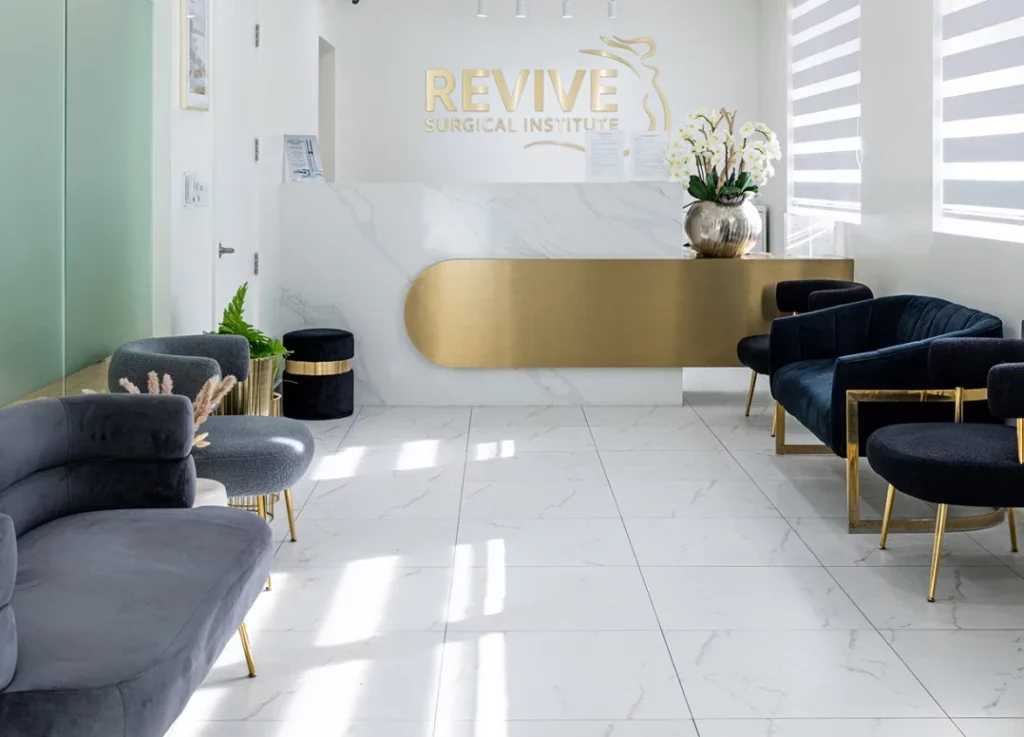
Generally, breast augmentation causes negligible pain, and over-the-counter medications are enough to manage any kind of discomfort faced after the surgery. These over-the-counter medications include Advil and Tylenol. How much pain patients may experience post-surgery depends upon two factors:
Your pain tolerance: Some people are better at dealing with pain. These people are said to have a high tolerance level. At the same time, others cannot cope with pain easily and are said to have a low tolerance level. The discomfort experienced post-surgery also depends on your pain tolerance level.
Amount of pain you can anticipate with time: The pain experienced during and after the surgery can be broken down into four stages. The first stage is just after the surgery. You may experience slight aching and tightness in your breast. The second stage is hours after the surgery. You may continue experiencing slight discomfort in your breast. The third stage is days after the surgery; this is the time when you are most likely to feel pain as the healing process has finally begun. The fourth stage is weeks after the surgery. You may feel slight soreness, which may decrease with time, and after a month, most of your soreness will be gone.
Breast augmentation surgery is performed under general anesthesia or conscious sedation. As a result, the patient feels no pain during the procedure. If you do not have any previous complications with general anesthesia, you will face limited risks. Our board-certified plastic surgeon will help you make the best decision for yourself. The procedure lasts for no more than 2 to 3 hours, after which the patient can go some easily.
You will probably have a lot of swelling after the surgery and feel sore for about 2 to 3 weeks. You may also feel a sensation of pulling and stretching in your breast area. This may last for a few weeks, after which you will start to feel stronger and better. Your newer breasts will feel firmer and look rounder. In the first few days after the surgery, your breast might feel numb, but it will improve with time. Following are some ways you can help yourself at home:
Activity: post-surgery, it is recommended that you reduce physical activity and allow your body to rest. You will probably be able to go back to your normal work after 1 to 2 weeks.
Diet: drink plenty of fluids and eat your regular diet. If you have an upset stomach, try to eat low-fat, bland foods. Unusual bowel movements post-surgery are very normal.
Medicines: you can ask your consulted doctor for over-the-counter medications to lower pain post-surgery.
Incision care: Your consulted doctor will give you instructions on how to take care of your incisions, in addition to taking care of the incision by washing the area daily with warm, soapy water and patting it dry. You should not use alcohol or hydrogen peroxide, as these substances can slow down the recovery.
Use ice: Place ice packs on your breast for 20 to 30 minutes at a time. This will reduce your swelling.
Breast implants do not expire but still are not guaranteed to last a lifetime. The average lifetime of silicon or saline implants is around 10 to 20 years. Generally, they are removed sooner because of complications or cosmetic concerns. The majority of people get their breast implants replaced every 8 to 10 years. Following are some signs that indicate that you may remove or replace your breast implants:
Saline rupture: A saline implant may rupture due to a tear in the implant sheet. If this happens, your saline implant may leak out and get absorbed by your body. The affected breast will lose its shape and size, which results in it looking dramatically different from the other breast. But you should keep in mind that breast implant ruptures are very rare.
Silicone rupture: Like saline implants, silicone implants can also rupture. Silicone gel is much thicker than saline because it does not leak out after the rupture and often stays inside the implant. Therefore, silicon ruptures are also termed silent ruptures.
Hardening: You may develop hardened scar tissue around your implants, causing tightness, pain, and abnormal cosmetic changes to the breast. Hardness can occur more than once in the same breast.
Gummy bear implants have a thicker gel than traditional silicone implants, which makes them firmer, hold their shape better, and feel more natural to the touch. Gummy bear implants are famous nowadays as they stimulate the feeling of young women’s breasts. The best advantage of gummy bear implants is that they do not have to fit around your existingbreast tissue. In addition to this, gummy bear implants have a low probability of rupturing as compared to silicone implants. Because of all these advantages, the price of gummy bear implants is higher than that of traditional silicone implants.
Yes, you can get augmentation surgery before having children. It is suggested that if you plan on not having children soon, then you may get breast augmentation surgery, and if you are planning to have children in the immediate future, then it is better to wait. But keep in mind that it is already proven that breast implants have no impact on your fertility or the health of your baby, and most women with breast implants can breastfeed their child.
No, we are not. Breast implants having a rough surface, often compared to sandpaper, are known as textured breast implants. These types of implants adhere to the tissue surrounding them, preventing them from moving around in the implant pocket created by the surgeon. Studies show that people with textured implants have a higher risk of a rare type of cancer known as breast implant-associated anaplastic large cell lymphoma (BIA ALCL). The risk is as high as 1 in 1000. We do not offer textured breast implants as they were recalled by the American Society of Plastic Surgeons and the FDA.
There are two different types of breast augmentation surgery performed by our American board-certified plastic surgeon, Dr. Askari: breast surgery for cosmetic or reconstructive reasons.
Cosmetic Breast Augmentation:
Completed for esthetic purposes
The most common reason for breast augmentation surgery
May enlarge naturally small breasts
Can restore breast size and shape after pregnancy, breastfeeding, or weight loss. Breast Reconstruction:
Breast Reconstruction:
Often done as part of the treatment for breast cancer
May provide symmetry and form to the breast
Can restore the breast after surgical intervention
Every surgery has risks and complications. Some common risks and complications following breast augmentation in Miami, Florida, include pain in the breasts, infection at incision sites, sensations in the breasts or nipples that may or may not go away, rupture or leaking of the implant, increased bleeding at incision sites, fluid accumulation, and Capsular Contracture (hardening around the implant, distorting shape, or causing pain). Communication with your plastic surgeon regarding any pain, bleeding, signs of infection, or abnormal concerns is essential in reducing risk or harm after breast augmentation surgery. In rare cases, patients can also experience something called breast implant illness, where their body rejects the implants.